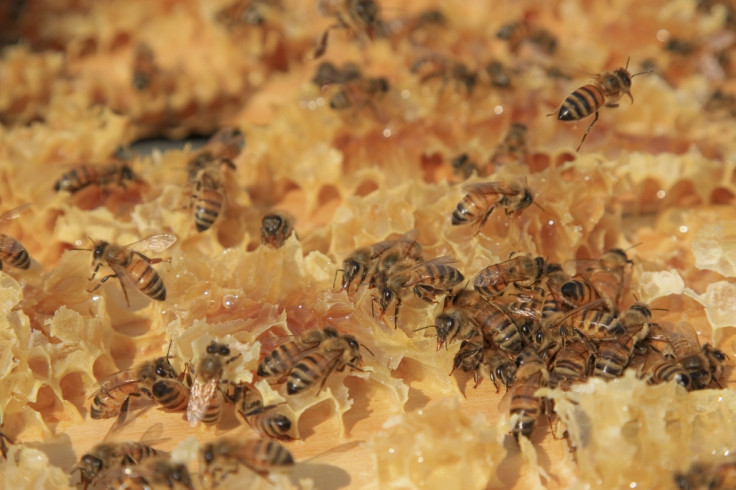Head-butting honey bees warn each other about impending danger

Bees warn each other about potential threats by head-butting. Their head-butts are a form of vibrational 'stop signal' − their method of saying not to leave the hive.
The research, published in PLOS Biology, says this is the most sophisticated form of warning signal in all insects that live in groups.
Scientists previously knew that bees could tell each other where a source of food is located. They do this by moving in a certain figure of eight inside the hive, which reveals its location. This is called the 'waggle dance'.
In 2011, researchers discovered that European honey bees could perform these head-butts as a way to stop another bee from waggle dancing. That ultimately stopped all bees leaving the hive and searching for food. However, researchers could not determine what triggered the bees to perform stop signals.
Discovering what causes stop signals
In order to find out, scientists from the University of California carried out experiments with Asian honey bees and giant hornets in a laboratory. These hornets are natural predators to honey bees.
Two different species of hornet were used; the large Vespa mandarinia, and the smaller Vespa velutina.

The researchers analysed the honey bee's reaction to coming into contact with each species of hornet. Each time, the bee would fly back to the hive and perform stop signals; warning the other bees about the hornets' presence.
The scientists expected to find more stop signals when the bees came into contact with the bigger hornet.
"However, we were very surprised to find that these Asian bees not only produced more stop signals, they also produced different kinds of stop signals," said lead researcher James Nieh. The pitch of stop signals changed when different predators were around.
The larger the threat, the more effective their stop signals were at preventing waggle dancing. Not only that, but when a predator was particularly close to the hive, the stop signals were longer and more drawn out.
This is the most intelligent reported form of alarm signalling in an insect. Up until now, this type of communication had only been found in vertebrates, like humans and monkeys.
© Copyright IBTimes 2025. All rights reserved.






















